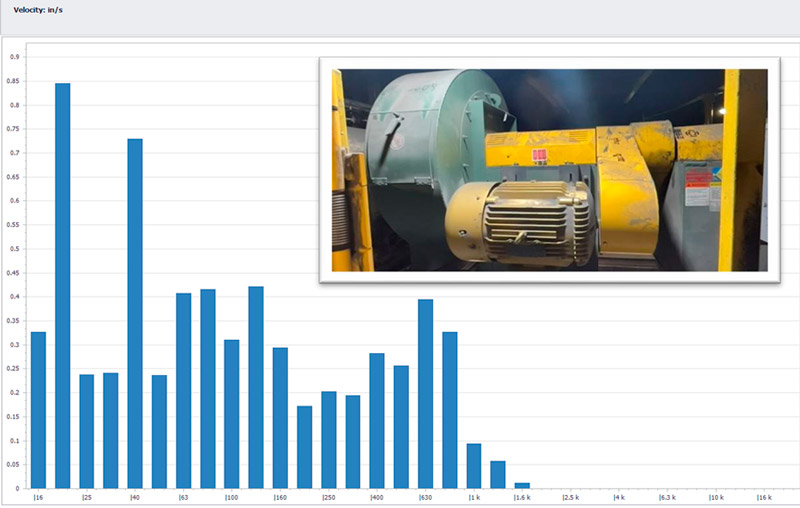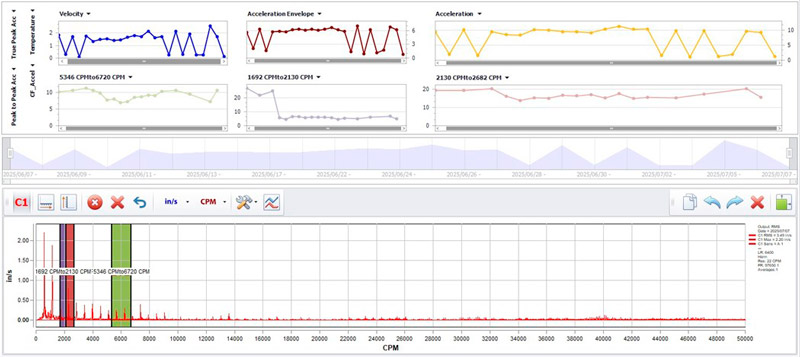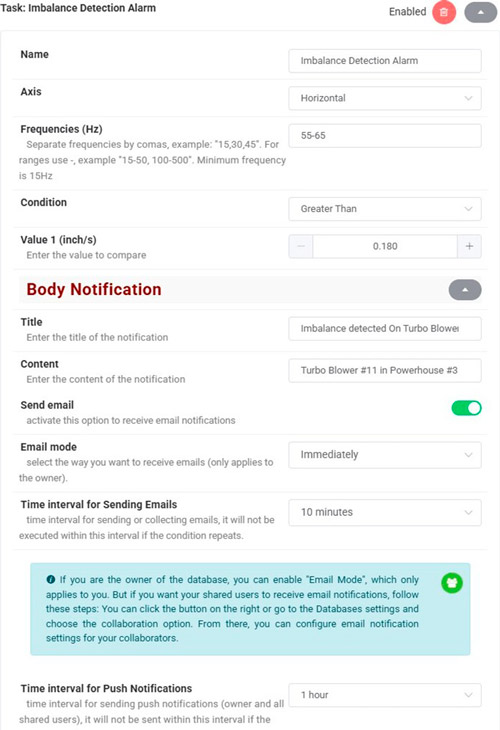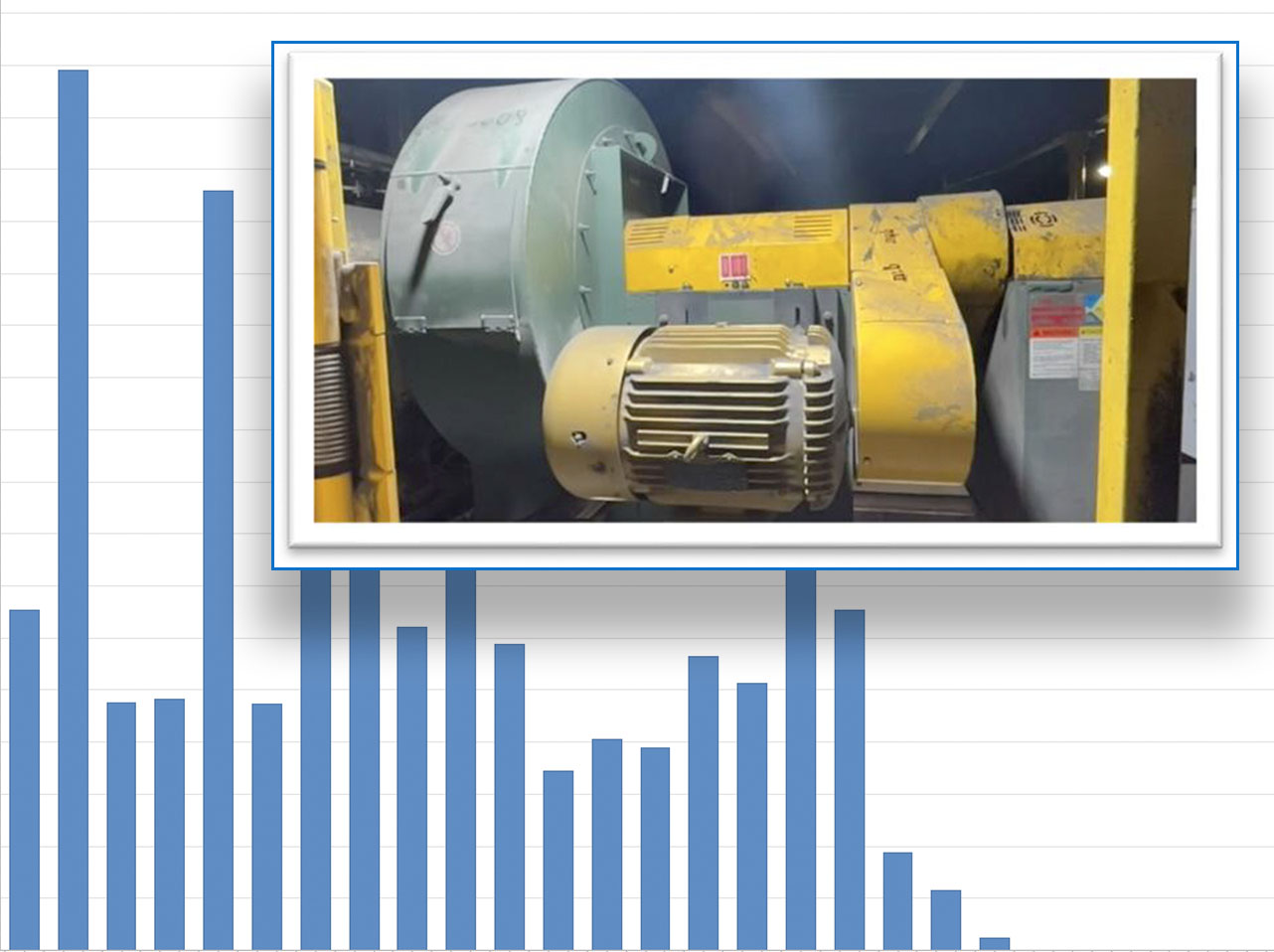Octave bands and their applications in Vibration Analysis
What are octave bands?
Octave bands are a way of dividing the frequency spectrum into parts that follow a logarithmic scale, meaning each band covers a frequency range in which the upper limit is twice the lower limit. Unlike an FFT analysis, where all frequencies are separated into equal intervals (for example, in steps of 10 Hz), octave bands group frequencies into scales that increase proportionally. For instance, an octave band starting at 1,000 Hz will extend up to 2,000 Hz.
This allows identifying which ranges have higher relative energy and makes it easier to compare them with comfort, health, or fault diagnosis standards.

Where do octave bands come from?
They have a deeply human foundation: they are designed to mimic the way we perceive sound and vibrations through our hearing.
Unlike measuring instruments, such as an accelerometer that records each frequency with mathematical precision, the human ear does not perceive sounds in a linear way. Instead, it responds to frequency changes logarithmically. This means we don’t notice differences in absolute hertz as much as proportional changes. For example, going from a 100 Hz sound to 200 Hz feels like a significant change, whereas going from 1,000 to 1,100 Hz—although also a 100 Hz difference—barely registers.
DID From this perceptual logic arises the idea of representing acoustic or vibrational signals using octave bands. These bands do not divide the spectrum into equal parts as a traditional FFT (Fast Fourier Transform) analysis does, but rather in proportional segments. In this way, each band covers a frequency range where the upper limit is twice the lower limit.
What are they used for in mechanical vibration analysis?
In vibration analysis, octave bands are used to identify, interpret, and assess vibrational energy within specific frequency ranges that have physical, perceptual, or regulatory relevance. Their main advantage is that they offer a simplified, more “human” representation of vibratory behavior—ideal for certain applications where the detailed output of an FFT is not necessary or may even hinder interpretation.
Practical Application in Industry
Trending an Octave Band
Octave band analysis is an effective tool for tracking trends within specific frequency ranges. By monitoring the evolution of energy in a given band, it is possible to detect gradual increases that indicate mechanical deterioration—even before critical failures occur. This technique allows maintenance personnel to focus on relevant areas of the spectrum without having to interpret complex data. In this way, abnormal patterns can be identified more easily, and maintenance interventions can be better planned, improving operational reliability through precise and sustained monitoring over time. It is ideal for predictive maintenance with a practical focus.
Some software, such as DigivibeMX, allows you to graph the trend of a specific band to identify its behavior over time.

Envelope Alarm Creation Using Octave Bands
Using octave bands to create envelope alarms allows for setting specific thresholds within defined frequency ranges, enabling more focused monitoring of vibrational behavior. This strategy can help detect abnormal increases in certain areas of the spectrum, even when the overall vibration level remains within acceptable limits. By monitoring each band individually, it becomes possible to identify progressive deterioration patterns that would not be visible through a single general alarm.
Moreover, octave bands provide a straightforward structure for configuring alarms in continuous or portable data acquisition systems, without requiring advanced knowledge of spectral analysis. This segmented monitoring approach can be easily adapted to different types of machinery and operating conditions, allowing for more precise tracking of dynamic conditions while reducing the risk of false alarms.
In the EI-Analytic online condition monitoring system, for example, it is possible to configure envelope alarms based on octave bands using a healthy signal from the machine to be monitored. This makes it much easier to identify increases in vibration and allows for fully configurable threshold values.

Band Increase Notifications
Some applications allow you to configure notifications to receive alerts when vibration in a specific frequency range exceeds a user- defined threshold. Instead of monitoring only an overall value, these notifications focus on a specific part of the spectrum, making it easier to detect issues like imbalance or wear at an early stage.
Since the alerts are centered on a single band, they are clearer, easier to interpret, and less likely to cause confusion. They also help track the progression of a specific condition and can be automatically integrated with maintenance reports or reminders.

Conclusion
The use of octave bands in vibration analysis offers a practical way to simplify complex data and focus attention on what truly matters. These bands not only reflect how we perceive sound and vibrations but also allow for more precise monitoring of specific frequency ranges within the spectrum.
This makes it possible to configure individual alarms per band, generate clear notifications in response to abnormal increases, and track the evolution of a specific condition without relying on detailed spectral analysis. Whether it’s to detect the progressive deterioration of a machine or to produce easy-to-interpret reports, octave bands become a versatile, intuitive tool well suited to the needs of modern maintenance.
Luis Sabido works as the Head of Customer Service and Technical Support at Erbessd Instruments. He is an experienced professional with 5 years of experience helping Erbessd Instruments’ customers worldwide master the health of their machines. Luis has studied Physics Engineering and is currently pursuing a second degree in Engineering in Technology and Information Systems.
ERBESSD INSTRUMENTS® is a leading manufacturer of Vibration Analysis Equipment, Dynamic Balancing Machines, and Condition Monitoring with facilities in Mexico, the USA, England, and India


